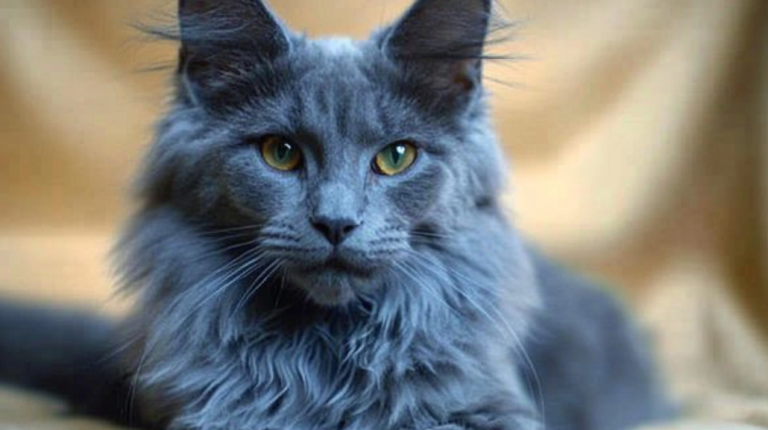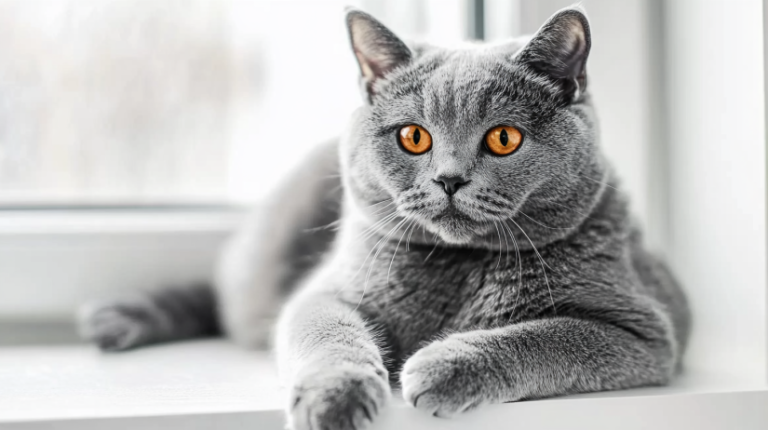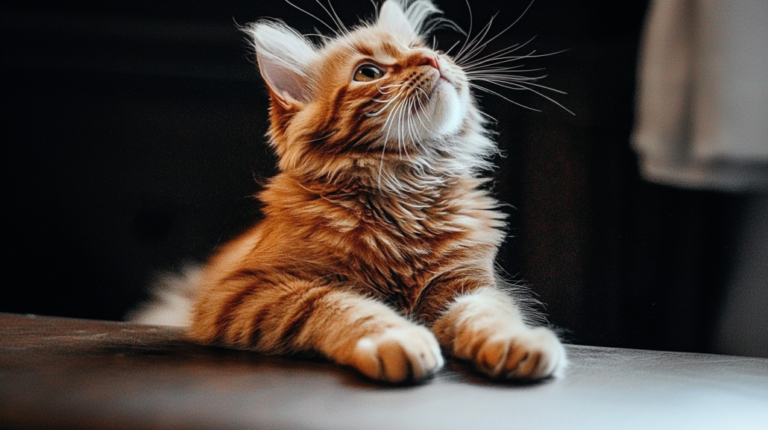Black Tabby Cats: 10 Amazing Secrets (Definitive Guide)
Introduction
There’s something irresistibly charming about Black Tabby Cats. Perhaps it’s their subtle swirl of patterns hidden within their dark fur. Or maybe it’s their bright eyes peeking through that midnight coloration, giving them an almost magical allure. If you’re one of those people who can’t help but do a double-take every time you spot a black-and-striped kitty strolling through your neighborhood, you’re in the right place. This article will take you on a playful journey into the world of Black Tabby Cats, where you’ll discover how these felines became such a cherished part of many households and why they may be the perfect companion for you.
Prepare for some fun! We’ll look at fascinating folklore, highlight health considerations, and even compare Black Tabby Cats to other tabby patterns you might encounter. By the time you’re done reading, you’ll have a deep appreciation for these furballs and the confidence to give them the best care possible. Let’s dive right in!
A Brief History of Tabby Cats
To understand Black Tabby Cats, it helps to know a bit about tabby cats in general. “Tabby” is related to the fur pattern, not to a specific breed name. Black Tabby Cats exhibit stripes, spots, swirls, or blotches on an underlying base coat, creating a unique interplay of dark and light.
Many experts trace the tabby pattern back to the African wildcat, the presumed ancestor of most domesticated cats. Over time, selective breeding and natural genetic diversity gave rise to the variety of tabby patterns we see today—including the captivating black variation. According to research from the Cornell Feline Health Center, tabby cats were (and still are) some of the most common patterns among domestic felines, partly due to the camouflage advantage the stripes provide in the wild.

Why They’re So Common
- Tabby genetics are dominant: If a cat inherits the tabby gene from just one parent, it will display tabby markings.
- Evolutionary benefits: The stripy or swirly patterns help them blend into tall grasses or wooded areas.
- Human preference: People love the distinct look of tabby coats, and breeders often select for these unique patterns.
The Tabby Patterns and Where Black Tabby Cats Fit In
When you think of tabby, you might picture a brown tabby, gray tabby, or even an orange tabby. But there’s a darker, more mysterious version that gets overlooked: Black Tabby Cats. Tabby patterns come in four main types:
- Mackerel Tabby
- Vertical stripes running down the cat’s body like fishbones.
- Classic Tabby (Blotched)
- Distinct, swirling markings that form bullseye shapes on the cat’s sides.
- Spotted Tabby
- Spots instead of stripes or swirls, scattered across the body.
- Ticked Tabby
- Each hair alternates in color, giving the cat a “salt-and-pepper” or “sand-like” appearance.
Black Tabby Cats can appear in any of these pattern types. The key difference is that their overall coat is so dark, the stripes can sometimes be subtly visible only in bright light. In certain lighting conditions, you might see faint ghost stripes or lightly shaded undertones, giving them an understated elegance.
Physical Characteristics of Black Tabby Cats
You might wonder how to distinguish Black Tabby Cats from solid black cats. The easiest approach is to spot the unique tabby “M” marking on their forehead. Even if the rest of the coat is very dark, the “M” is often easier to spot. Additionally, in direct sunlight, you may notice stripes, swirling patterns, or spots that reveal the cat’s tabby heritage.
Here are some typical features you might see in Black Tabby Cats:
- Coat Shade: Primarily dark gray or black, sometimes with visible striping.
- Eye Color: Often ranges from gold to green, although hazel or copper tones aren’t uncommon.
- Nose and Paw Pads: Usually black or dark gray, consistent with the cat’s overall coloration.
Table 1: Quick Comparison of Black Tabby vs. Solid Black Cats
| Feature | Black Tabby Cats | Solid Black Cats |
|---|---|---|
| Coat Pattern | Subtle stripes, swirls, spots visible in bright light | Uniformly black with no distinct patterns |
| Forehead Marking | “M” pattern typically visible | No “M” marking |
| Eye Colors | Often green, gold, or copper | Range from yellow to green, sometimes copper |
| Nose & Paw Pad Color | Usually very dark, matching coat hue | Typically black or very dark gray |
| Undercoat Visibility | May have lighter undercoat enhancing tabby stripes | Usually a solid undercoat, no pattern |
Personalities and Temperaments
Although color and pattern do not guarantee personality traits, many owners of Black Tabby Cats claim their feline friends are affectionate, playful, and a bit mysterious. Of course, each cat has its own unique temperament shaped by genetics, environment, and socialization. However, common threads reported by cat lovers include:
- Curious and Adventurous: Black Tabby Cats often enjoy exploring new nooks and crannies.
- Sociable: They may form strong bonds with family members and even get along well with other pets.
- Intelligent and Trainable: With positive reinforcement, they can learn tricks or respond to commands like “sit” or “come.”
- Lap Lovers: They’re known to snuggle when they feel secure, which can be delightful for anyone seeking a friendly companion.

Myths and Folklore Around Black Tabby Cats
Throughout history, black cats in general have been steeped in superstition—some cultures view them as bearers of good fortune, while others consider them a bad omen. Black Tabby Cats share in some of these legends but with a twist: the tabby pattern has ties to ancient stories involving good luck and divine intervention.
- In Middle Eastern folklore, tabby cats are believed to have gained the “M” marking on their forehead from a blessing by the prophet Muhammad.
- European tales sometimes refer to black cats as witches’ familiars but also as symbols of prosperity if they choose to reside in your home.
In modern times, most cat owners dismiss the negative connotations and focus on the affectionate, sometimes mischievous nature of Black Tabby Cats. After all, any cat who brightens your day is clearly a good omen!
Choosing the Right Black Tabby Cat for Your Home
Adopting a cat is a major decision that impacts your daily life. Before you bring home a Black Tabby Cat, consider the following:
- Lifestyle: Are you out of the house a lot, or do you work from home? Kittens require more attention and training, while adult cats may fit more easily into a busy lifestyle.
- Space: Black Tabby Cats enjoy climbing, jumping, and exploring their surroundings.
- Allergies: No cat is completely hypoallergenic, but some people find tabby coats easier to manage than long-haired breeds.
- Other Pets: If you already have cats or dogs, introduce a new Black Tabby Cat gradually and carefully, following reputable guidelines such as those from the ASPCA.
Ensuring a Good Match
Attend adoption events or visit shelters to interact with different personalities. Look for a cat that seems curious and comfortable around people—those traits often translate to a loving companion at home. Remember, shelter staff can help you find a cat that fits your lifestyle. If you’re adopting from a breeder, do your research: check for ethical practices, proper documentation, and healthy living conditions for the cats.
Health and Wellness Considerations
Like all cats, Black Tabby Cats benefit from regular veterinary care. According to the American Veterinary Medical Association (AVMA), core vaccines, spaying or neutering, and annual wellness exams can significantly extend a cat’s lifespan. Although there’s no unique health issue specific to Black Tabby Cats, you’ll want to keep an eye on overall feline health concerns:
- Dental Health
- Cats can develop plaque and tartar, leading to gingivitis or periodontal disease.
- Regular brushing or dental treats can help.
- Obesity
- Overeating and lack of exercise may lead to weight gain.
- Provide interactive toys, climbing structures, and portion-controlled meals.
- Parasites
- Fleas, ticks, and worms can be managed with preventative medications.
- Consult your vet for the best treatment plan.
- Chronic Conditions
- Kidney disease, heart disease, and diabetes can appear in any cat.
- Early diagnosis through routine check-ups is crucial.
Important: If you notice changes in eating habits, energy levels, coat quality, or litter box behavior, consult a veterinarian right away.
Grooming Requirements
One reason Black Tabby Cats are so appealing is that they typically have low to moderate grooming needs. Most have short coats, requiring weekly brushing to reduce shedding and hairballs. Here are some tips:
- Brush Regularly: Use a soft-bristle or rubber brush to remove loose fur.
- Check Ears: Gently wipe away debris to prevent infections.
- Nail Trims: Keep claws at a comfortable length to avoid damage to furniture and minimize the risk of broken nails.
- Baths: Usually, cats groom themselves thoroughly. Consider a bath only if your Black Tabby Cat gets into something particularly messy.
If your cat has a medium or long-haired coat (possible in some mixed breeds), you’ll need more frequent brushing—especially around the belly and hind legs where tangles can form.
Feeding and Nutrition
High-quality cat food—rich in animal-based protein and balanced in essential vitamins and minerals—is key to a healthy Black Tabby Cat. Look for brands that list real meat (chicken, turkey, or fish) as the main ingredient. If you’re unsure about feeding guidelines, consult your veterinarian.
General Feeding Tips
- Portion Control: Overfeeding leads to weight gain, which can reduce mobility and quality of life.
- Hydration: Always provide fresh water; some cats prefer fountains to encourage more drinking.
- Life Stage Appropriate: kittens, adult cats, and senior cats each require unique nutrition. Read labels carefully.
- Watch for Allergies: If you see signs of food sensitivity—like excessive itching or vomiting—discuss a hypoallergenic diet with your vet.
Behavioral Enrichment and Training
Black Tabby Cats tend to be playful and inquisitive, so mental stimulation is a must. Interactive toys, puzzle feeders, and even leash training can keep your cat mentally engaged. Consider setting aside daily play sessions—like chasing a feather wand or laser pointer—to help channel that playful energy constructively.
- Clicker Training: A popular method that uses a small handheld clicker and treats to mark and reward desired behaviors.
- High Places: Cats love perching. Provide cat shelves or a tall cat tree so your Black Tabby Cat can observe the household from above.
- Safe Outdoor Time: If you have a secure backyard or a catio, supervised outdoor exploration can be a fantastic way for them to burn energy.
How Black Tabby Cats Compare to Other Popular Tabby Variants
Black Tabby Cats share many traits with other tabby varieties (like brown or gray tabbies). However, the darker fur sometimes makes them appear more mysterious or regal. Here’s how they stack up against other common tabby types:
- Brown Tabby: Classic look, stripes or swirls are more pronounced.
- Gray Tabby: Also called blue tabbies; stripes are typically charcoal gray on a lighter gray base.
- Orange/Red Tabby: Bold stripes on a bright, sunny coat; very popular in pop culture (think Garfield).
- Black Tabby: Understated elegance—patterns may be visible only in certain lighting, giving them an almost secretive appearance.
In essence, the difference is primarily aesthetic; all tabby cats, including Black Tabby Cats, can make fantastic companions.
Involving Children and Other Family Members
Because of their curious and often friendly nature, Black Tabby Cats typically do well in households with kids. Teach younger family members how to handle the cat gently and respect personal boundaries. Demonstrating proper petting techniques and encouraging gentle play fosters a positive relationship for both the child and the cat.
Tip: Establish a “cat zone” in your home—a cozy retreat where your Black Tabby Cat can go to relax or nap undisturbed when household activities become overwhelming.
Introducing Your Black Tabby Cat to Other Pets
If you already have pets at home, a proper introduction is key to harmony. First, give your new Black Tabby Cat a private room stocked with food, water, litter box, and comfortable sleeping spots. Over a few days, let the new cat and your other pets sniff each other under the door. Gradually move to short, supervised meetings, offering treats to both sides to build positive associations.
- Step-by-Step:
- Keep them separated initially to reduce stress.
- Swap bedding or toys so they become familiar with each other’s scent.
- Use a baby gate or crack the door open slightly to allow visual contact.
- Reward calm interactions; increase time together slowly.
Following these guidelines helps prevent territorial disputes, ensuring everyone can coexist peacefully—including your Black Tabby Cat.
Real-Life Stories and Examples
Many cat owners share anecdotes of Black Tabby Cats who demonstrate astonishing loyalty, intelligence, or comedic timing. For instance, you might hear about a black tabby who learned to open cabinet doors, or one who follows its owner around the house like a puppy. Such stories underscore the dynamic range of behaviors you can expect from these felines.
I once fostered a lively Black Tabby Cat named Midnight. She had faint swirling stripes across her torso that only showed up in bright sunlight. Midnight loved perching on the windowsill, batting at passing insects, and pouncing on toy mice. Her spirited personality and subtle, alluring appearance made her a memorable companion who found a forever home with a family seeking an energetic cat.
Common Mistakes New Owners Make
- Skipping Socialization: Cats need social experiences just like dogs. Isolating them can lead to fear or aggression.
- Overfeeding: It’s easy to show love with treats, but too many can harm their health.
- Neglecting Dental Care: Regular brushing and check-ups help avoid serious dental issues.
- Ignoring Behavioral Cues: Tail flicking, ears back, or low growling often signals discomfort or fear.
Being mindful of these pitfalls can create a smooth, rewarding experience with your new Black Tabby Cat.
Frequently Asked Questions (FAQs)
FAQ #1
Do Black Tabby Cats require special care compared to other tabbies?
Most tabbies share similar grooming and health needs. Black Tabby Cats just need regular vet check-ups and a balanced diet to thrive. Their dark coats may hide subtle patterns, but they don’t affect basic care.
FAQ #2
How can I tell if my cat is a solid black or a Black Tabby Cat?
Look for the “M” on the forehead or faint stripes in bright sunlight. Black Tabby Cats usually show subtle tabby patterns under direct light. A solid black cat won’t have any visible striping.
FAQ #3
Do Black Tabby Cats get along well with kids?
Yes, they generally do. Black Tabby Cats can be playful and adaptable, making them suitable for households with kids. Supervised interactions build trust and respect.
FAQ #4
Are Black Tabby Cats more prone to weight gain?
They have no unique predisposition. Like all felines, Black Tabby Cats need balanced diets and exercise. Portion control and active play sessions prevent unwanted weight gain.
FAQ #5
Can Black Tabby Cats live with other animals?
Yes, with proper introductions. Black Tabby Cats can adapt to multi-pet environments when given time to adjust. Gradual, positive interactions encourage harmony.
FAQ #6
Does coat color affect personality in Black Tabby Cats?
There’s no scientific proof color alone shapes personality. Black Tabby Cats can be loving or aloof, just like any other feline. Socialization and environment often matter more.
FAQ #7
Are Black Tabby Cats harder to adopt from shelters?
Black-coated cats sometimes wait longer for adoption. Yet Black Tabby Cats have a distinct allure due to their hidden stripes. Visiting shelters in person can help them stand out.
Conclusion
Black Tabby Cats bring a captivating mix of mystery and charm to any home. Their subtle coat patterns, intelligent nature, and adaptable personalities make them an excellent choice for families, singles, and everyone in between. By understanding their history, health needs, and care requirements, you’ll be well-equipped to offer your Black Tabby Cat the happy, playful life it deserves.
We hope this guide helps you feel confident about inviting a Black Tabby Cat into your family. Whether you’re adopting a lively kitten or a laid-back senior, these furry friends have plenty of love (and mischief) to share. If you have any personal experiences or tips about living with Black Tabby Cats, feel free to share them in the comments below—your insights might just help someone else find their purr-fect pet!







